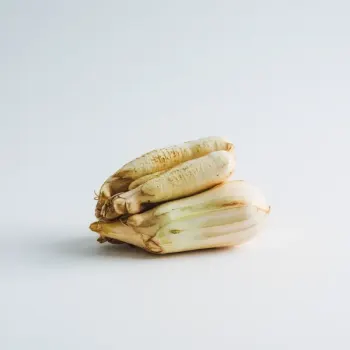


Dried
Galangal that has been dehydrated and can be found in slices or powdered form, suitable for longer storage.
Paste
Galangal ground into a paste, often combined with oil or other preservatives, and used for its intense flavor.
Sliced
Pre-sliced galangal is available in some markets, offering convenience for quick use without the need for chopping.
Pickled
Galangal preserved in vinegar or brine, adding a tangy flavor to the ingredient's natural spiciness.
Powdered
Ground dried galangal, which is convenient for adding a quick flavor to dishes without the need for preparation.
Fresh Galangal
Whole, unpeeled rhizomes, which are dense and woody, ideal for grating or finely chopping to infuse flavor.




dried galangal: No specific brand recommendation; look for products in well-sealed packaging.
fresh galangal: No specific brand recommendation; typically found in Asian markets or specialty stores.
galangal paste: Thai Kitchen, Maesri
pickled galangal: No specific brand recommendation; often found in local Asian grocery stores.

Grating: Grating galangal helps to release its flavors without the fibrous texture. Use a fine grater to add it to marinades, curry pastes, and soups.
Pounding: In a mortar and pestle, galangal is pounded along with other spices and herbs to create a fine paste for use in curry pastes and similar preparations.
Simmering: Galangal is often added in large slices or chunks to soups and curries, where it can simmer and infuse the dish with its flavor. It's typically removed before serving.



